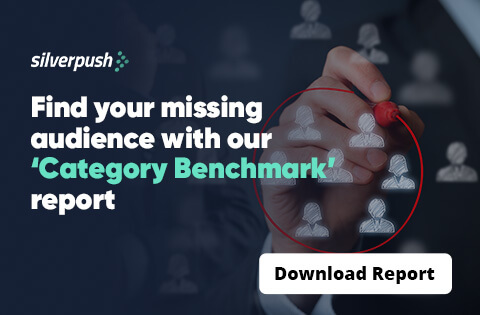Contextual Advertising: The Advertising Industry’s Next Big Step | 11 Apr, 2022

From viewing ads for a ‘laptop’ on a newspaper’s ‘Science and Technology’ page to viewing a ‘shoe ad’ on a YouTube video of ‘5 running tips for beginners’, contextual advertising has always been relevant and impactful!
With Apple’s new iOS 14.5 privacy policy and Google Chrome’s pending ban on third-party cookies, all ad-tech companies are striving to find new ways to sell their ads without hindering users’ privacy.
As targeted and behavioral marketing becomes increasingly challenging, contextual advertising has evolved as a solution that targets the correct audience with relevant ads while respecting their views on data privacy and personalization.
What is Contextual Advertising?
The year 2022 has seen the rise of contextual advertising. It is a powerful and effective method of reaching the target audience by displaying ads on a webpage that matches the ad’s content. At the same time, it ensures a seamless ad experience for both advertisers and viewers.
Let’s understand contextual advertising better with some examples:
- If you’re reading a movie review site, you could see ads that say things like “purchase movie tickets” or “join up for a movie streaming service.”
- Before watching a YouTube video lesson on “how to cut your own hair”, you view an ad for “shampoo”.
Here, instead of using consumer data, Keywords, Topic Targeting, and AI Technology are used to scan the website on which the visitor currently is. Then, ads that are relevant to the page’s context are displayed.
Also read:
Contextual Advertising Is More Cost-Efficient Than Behavioral Advertising
Advertisers’ Future is Contextual
Advertising’s contextual future is for sure. According to a research study, contextually relevant ads create 43% higher neural engagement and 2.2 times better ad recall.
On one hand, consumers are pleased to find their personal data better protected, on the other hand, they also expect to see ads that match their interests and are relevant to their online experience. This is a result of contextual targeting.
With third-party cookies coming to an end, brands need alternatives that meet their needs of targeting the correct audience at the correct time and place. The best solution to this problem is contextual targeting.
With this, marketers can still serve personalized ads and reach their target audience in a post-cookie world.
Unlike behavioral marketing, contextual ad targeting does not need third-party cookies to deliver relevant ad experiences to the user.
It is the best fix for advertisers when privacy is a major concern, and they still want to have a phenomenal impact on users.
Benefits of Contextual Advertising
- Meets your Budget
Unlike conventional methods of advertising, contextual advertising is cost-effective and does not hurt the pockets of the advertisers. They are charged only for the ads that are clicked and not for ads that are displayed on the site.
- Reaching Targeted Audience
Fulfilling its main motive by reaching the targeted audience, contextual ad targeting is the best method to boost sales for a product. This happens because ads are posted after proper research on keywords, keywords phrases, and the use of AI tech.
- Ability to Engage with Customers
When the people visiting the websites find ads relevant to the information, it boosts the brand awareness of the product. This engages more audience and thus increases the revenue of the company by increasing its sales.
- User Privacy not Compromised
The best feature of contextual advertising is that it does not require any 3rd party cookies to offer relevant ads. This plays a major role in meeting compliance requirements like CCPA and GDPR.
Silverpush’s Contextual Advertising Solution
With third-party cookies being phased out, engaging with customers has never been more essential. Silverpush’s flagship product Mirrors helps in context-relevant video level ad targeting using human-enhanced AI technology.
During the process, content-aligned ad placement, brand safety, and tailored brand compatibility are all guaranteed, along with reaching the largest possible audience.

BLOGS
Super Bowl Advertising: A Month-Long, Multi-Screen Event for Brands
For Americans, there are two events that they hyped for a whole year - Football season, and waiting for football season. Football remains highly popular among Americans, with searches for "NFL Draft" and viewership numbers showing an unwavering interest in the sport. According to Google Search data, football is more ...

BLOGS
Advertising in the Age of Climate Change: The Adoption of Carbon Emission Metrics
The urgency of the climate crisis is increasing, and the media industry is no exception. While some professionals are working to reduce their direct operational emissions, there is an urgent need for common standards to be set for indirect emissions that come from digital advertising. The digital advertising industry is becoming ...

BLOGS
Complete Guide to Reaching Audience with Cookieless Advertising
What’s your alternative game plan for effective cookieless advertising? Haven't thought about it yet? The time is now! Introduction The complete year of 2022 was dedicated to cookies! Panic is setting in amongst marketers owing to mounting privacy laws and the ban on cookies, causing them to re-evaluate their strategies.







